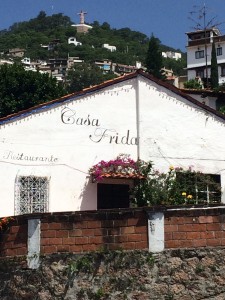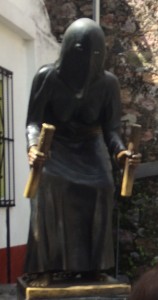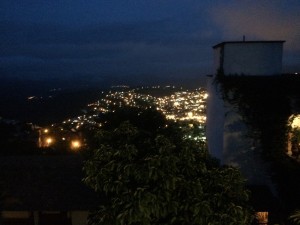
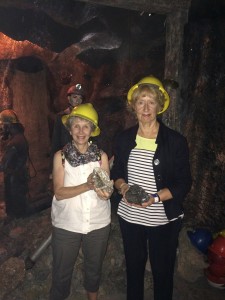
Verily El Conquistador Cortes sent forth the word across the land that all the gold and silver and blood they had extracted from the heathen savages was not enough to satisfy the hunger of the sovereign. By which he meant himself, though he referenced certain throned Royalty in Sacred Madrid. Thus did his minions go forth across the land seeking more savages and sacred metals, and thus did they discover precious metals and begin digging and blasting themselves silly, and thus did come into being the town of Taxco. It sounds like a corporate agency devoted to gathering revenue, but it’s now become a lovely old town in the Southern Sierra Madre dedicated to worship and to divining the mysterious ways of silver.
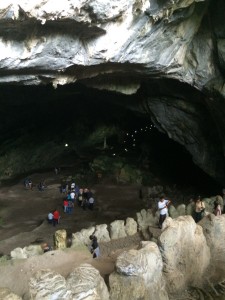
Winding our way over some scenic mountain roads, after making a stop at “Grutas de Cacahuamilpa on the way we finally arrived. “Grutas” seems to translate as “Grottoes”, so I was picturing pools and waterfalls surrounded by cliffs. Nope. They’re caves. Enormous. Been a long time since I visited Mammoth Cave, but I can’t imagine it’s any bigger. This one didn’t have a river runnign through it, though. Pretty modern operation, all fitted out with ziplines and all.
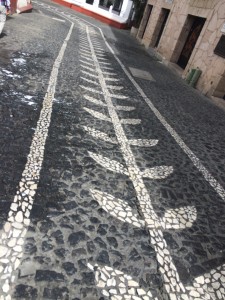
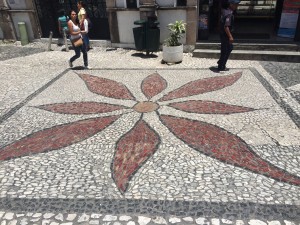 But to Taxco. Like most of the mining towns we’re used to in the Sierra foothills, it’s built on a hillside, with buildings spilling from the ridgelines down into the gullies. Unlike the CA gold rush towns, the buildings are mostly white stucco with tile roofs, many build well before that mid-19th Century in the USA. The take from the mines has dwindled now, and the place has had to start importing silver and gold from Zacatecas to supply its artisans. The artistry, by the way, does not stop at silver, as is plain by the gorgeous stonework on display in the very streets. Obsidian (or a close relative) and marble are the main ingredients in the unique cobblestones.
But to Taxco. Like most of the mining towns we’re used to in the Sierra foothills, it’s built on a hillside, with buildings spilling from the ridgelines down into the gullies. Unlike the CA gold rush towns, the buildings are mostly white stucco with tile roofs, many build well before that mid-19th Century in the USA. The take from the mines has dwindled now, and the place has had to start importing silver and gold from Zacatecas to supply its artisans. The artistry, by the way, does not stop at silver, as is plain by the gorgeous stonework on display in the very streets. Obsidian (or a close relative) and marble are the main ingredients in the unique cobblestones.
Along the way (16th C.) they build a fairly squat and ugly cathedral with a convent built on. That’s been turned into a school now, but the memory remains, with businesses advertising themselves as “ex-convento.”
 Uphill from that, though, a Frenchman named Bardo came on the scene for obscure reasons, settled down, got rich, and built an enormous neo-rococo structure impressive in both size and artistry. Our guide, Felipe, says it’s the most important church in town, and judging by the sro crowd for Monday afternoon mass and the three funeral processions we saw in one afternoon, we cannot say him nay.
Uphill from that, though, a Frenchman named Bardo came on the scene for obscure reasons, settled down, got rich, and built an enormous neo-rococo structure impressive in both size and artistry. Our guide, Felipe, says it’s the most important church in town, and judging by the sro crowd for Monday afternoon mass and the three funeral processions we saw in one afternoon, we cannot say him nay.
And I might have mentioned that Frida Kahlo is said to have lived there for ten years or so. She confirmed the rumor when we called on her at her casa, pictured at below.
Perhaps marring the good feelings the tile work engendered is a sculpture of three hooded figures, representations of a fairly gruesome ritual associated with holy week around here. Each figure represents a Medieval penitent, one carrying a heavy load, another carrying a cross and a self-flagellating whip, and a third (the only woman) carrying a lighted candle in each hand, her feet chained together.
After a lot of silver shopping and a trip to the top of a nice imitation of Christ of the Andes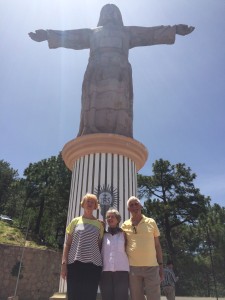
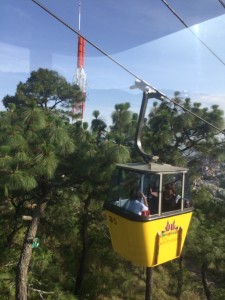 as well as a gondola ride back up to our hotel
as well as a gondola ride back up to our hotel
(Hotel Montetorres,BTW, does not have service and food that live up to its spectacular views.), We ended a most satisfying day. One of the most curious and interesting instances was the directions provided by a pair of young lesbians. Their sexual orientation is worth mentioning only because in this small mountain town, it seemed courageous to come out giggling and holding hands the way they were. But people didn’t seem to be shunning or ridiculing them, so maybe Pope Francis and the rest of us are winning after all.

